This multidisciplinary meeting was attended by experts and community members. It presented the results of most recent scientific research conducted in the Archipelago, with a majority of these related to efforts to restore and conserve the Galapagos’ terrestrial and marine ecosystems.
Washington Tapia is the General Director of Conservando Galapagos Galapagos Conservancy’s Affiliate in the Islands. He presented the topic “Galapagos Land Iguanas As Ecosystem Engineers” and stated that iguanas are one the most versatile species of plant communities. This highlights the importance of conducting research to protect them.
We were also able to discuss the conservation and restoration of Giant Tortoise population. Cristian Gil, Conservando Galapagos’ research assistant, spoke out about the captive breeding and rearing program of Giant Tortoises in Isabela. This allows for the repopulation from the Sierra Negra volcano, south of the Island. He noted that 2781 tortoises were repatriated from this area between 1999 and the present.
Galapagos Conservancy Grants to Conservation Action Program was another topic that attracted the attention of the presenters. This program is aimed at entrepreneurs in Galapagos as well as public and private organizations that are focusing on sustainability in the Islands.
It is vital to bring science closer to the public in order to protect the environment. “Advancements in different areas of science help find solutions for new challenges, both environmental and economic, and promote sustainable development,” Dr. Jorge Carrion (Conservando Galapagos Conservation Director) said.
We congratulate the GNPD on organizing the IV Science and Conservation Symposium. Carrion stated that ecosystem preservation has a number of important benefits for the environment as well as human well-being. Events like this allow these benefits to be shared among the community.”
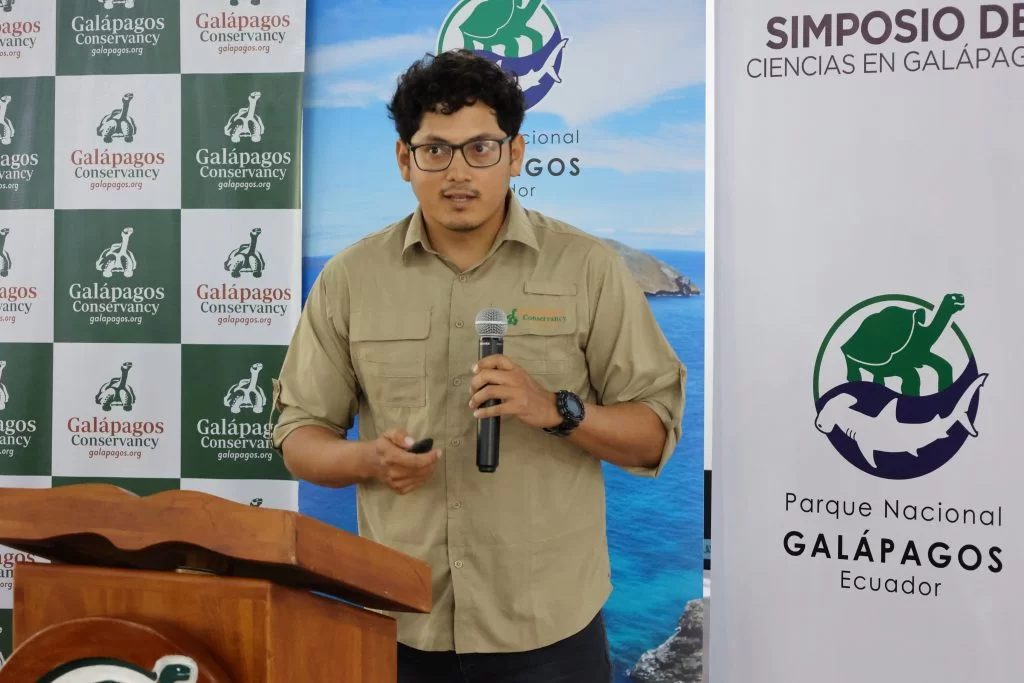
Cristian Gil, asistente de investigación de Conservando Galápagos. © Galápagos Conservancy
For example, Iguanas are believed to have arrived in Galapagos five million years ago via rafts of vegetation that were dragged from America by ocean currents. They evolved, colonized, and adapted to the islands they now call home, becoming endemic species in Galapagos.
There are currently four types of iguanas within the Archipelago. The Marine Iguana is found on Isabela and Santa Cruz Islands, as well as San Cristobal and Fernandina Islands. The Pale Land Iguana is restricted to Santa Fe Island. The Yellow Land Iguana can be found on Fernandina and Isabela Islands. The Pink Iguana was discovered in a rare species that lives on Isabela Island’s Wolf Volcano.
Galapagos Iguanas are more than a tourist attraction. Their uniqueness has made them the center of scientific attention. Scientists want to study their ecological role in the Islands as well as their impact on their habitats. Iguanas also represent evolutionary processes. For example, the Marine Iguana is the only lizard that can be found in the ocean and was the first to do so. Galapagos Conservancy funded studies in 2015 to collect information about the Galapagos National Park’s iguana species, threats and population status to help create management recommendations.
Washington Tapia is the General Director of Galapagos Conservancy. He stated that specific conservation actions have been developed through Iniciativa Galapagos, which coordinates with the Galapagos National Park Directorate. These conservation actions will also be used to restore and protect the Land Iguana populations. Tapia stated that the Pink Iguana was the most recent species to be discovered. It is vulnerable because it is only found on Wolf Volcano. Therefore, its protection should be a top priority. This species is rare, with only 350 known individuals worldwide. Therefore, a conservation plan has been developed to protect it.
One of the most fascinating characteristics of Land Iguanas are their ecosystem engineering abilities. This means that they move soil and displace flora. This benefits the environment and the ecological integrity of the islands they live on. According to the International Union for Conservation of Nature Red List of Endangered Species, both the Yellow and Pale Land Iguanas are considered vulnerable. Critically endangered is the Pink Iguana. Galapagos Land Iguanas can be particularly vulnerable to introduced species such as feral cats and dogs that attack and destroy the nests of the iguanas, or feral pigs who eat their eggs.
The Marine Iguana’s unique ability to dive makes them the only lizards that can dive to depths up to 25m. They can stay in the water for as long as 60 minutes before returning to land to heat up. Marine Iguanas are listed by the IUCN in the Vulnerable section of their Red List of Threatened Species. The threats include pollution, invasive species and the effects climate change has on ocean temperatures.
Galapagos Conservancy uses its technical and financial resources to protect and preserve endemic species. This includes the Galapagos Iguanas, whose presence is one reason why UNESCO designated Galapagos a Natural World Heritage Site.
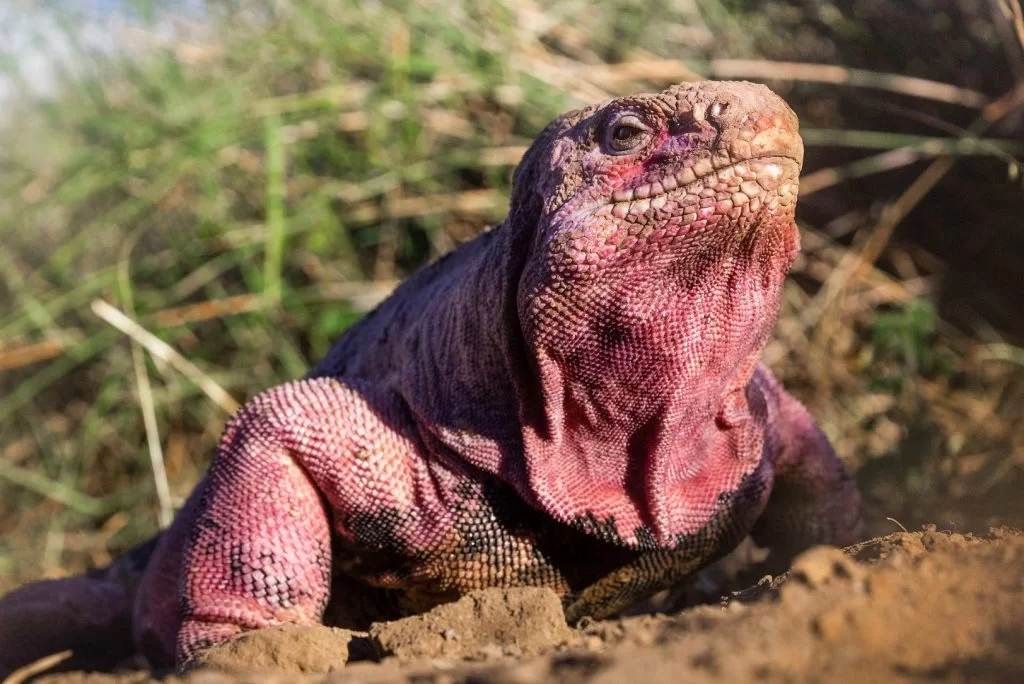
Pink Iguana © Joshua Vela/Galápagos Conservancy
It is a proud moment for Galapagos conservation. Galapagos Conservancy created a new local affiliate in Ecuador on February 17, 2022: Conservando Galapagos.
Conservando Galapagos, a 100% Galapagueno-run organization, is made up of a skilled technical team of dedicated conservationists. The foundation will work in partnership with the Galapagos National Park and local conservation organizations to preserve, protect and restore wildlife and ecosystems. This will ensure a sustainable future for residents of Galapagos.
Galapagos Conservancy plans to invest $20 million in the next five-years to support conservation priorities identified by Conservando Galapagos. Conservando Galapagos’ highly skilled team will supervise grants and offer technical assistance to grantees. This agreement will allow Galapagos Conservancy members to donate more effectively for conservation work on the ground.
It is an honor to be the General Director of Conservando Galapagos, and to collaborate directly with Galapagos Conservancy’s President, Dr. Paul Salaman.
Local people have always had the power to decide the fate of many species that call Galapagos home. Conservado Galapagos is a significant milestone, as its team of experienced local people are committed to protecting their natural heritage. Galapagos Conservancy proudly supports its creation and will cover its long-term operational costs so that the team can save as much of their fauna and flora as possible.
Galapagos Conservancy is laser-focused on the best interests of the Galapagos Archipelago’s wildlife and its people. The Galapagos Conservancy Board of Directors and staff firmly believe that Galapaguenos should be empowered and trusted to take conservation action in their own communities. Conservando Galapagos is officially inaugurated at Santa Cruz Island, September 9, 2022.
This is the start of a new era for conservation in Galapagos.
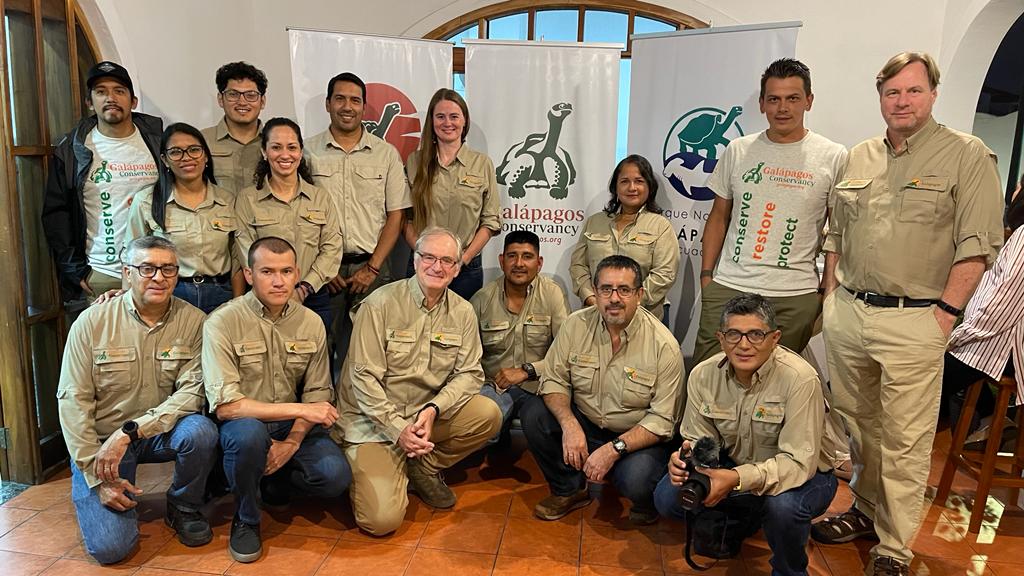
Galápagos Conservancy and Conservando Galápagos Team © Galápagos Conservancy
The Galapagos National Park Directorate is responsible for managing protected areas in the insular area. Danny Rueda, the Director of GNPD, stated that 316 park rangers are dedicated to Galapagos and work 365 days a calendar year to preserve this natural heritage.
Rueda stated that the challenge was to develop management plans that would allow local communities and visitors to have access to environmental services, benefit from resources such as timber extraction and fishing, and improve their quality-of-life and social conditions.
The GNPD has strategic allies to help it fulfill its great responsibility, which is to ensure the integrity and sustainability the Galapagos natural resources. One of these strategic allies is Galapagos Conservancy. Paul Salaman, the President of the GNPD, has over 30 years of conservation experience and stressed that the best way to ensure sustainability of a site is to involve the community in the preservation of protected areas.
Salaman stated that “We are passionate and committed to conserving this Natural World Heritage Site. So one of our priorities it to manage more resources to encourage support from the U.S. to get funds as quickly as possible to Galapagos. We are becoming more efficient through conservation grants to support more projects and initiatives, particularly those led by the community.”
Permanent financial resources are required to support conservation efforts in the Galapagos Islands. Galapagos Conservancy must provide scientific and technical assistance to the GNPD, and address any financial resources that are required to continue the development of conservation activities on the Islands.
The preservation of biodiversity on our planet is essential for human well-being. This is why it is so important to ensure the conservation of Galapagos Islands. The Archipelago, one of the most significant natural sites in the world is included on the prestigious World Heritage Sites List. It was also the first site to meet the criteria set by UNESCO for this designation. A site must have remarkable natural phenomena and represent the major stages in Earth’s history. It also needs to exhibit important ecological and biological principles and provide critical natural environments.
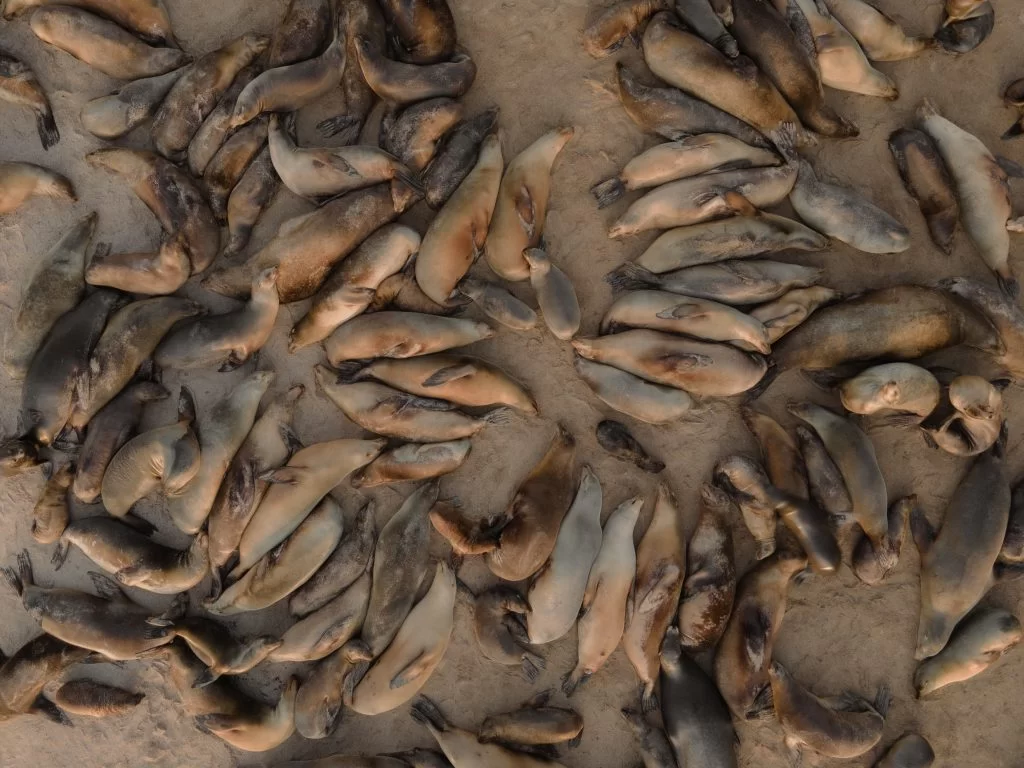
Lobos marinos Isla de San Cristobal © Joshua Vela
Experts in culture say it’s possible to raise awareness about environmental threats and promote conservation through the arts. Bertha hopes to increase citizen participation in the defense of Archipelago’s biodiversity and social responsibility to care for it through her initiative, which promotes the preservation of islands through art.
Bertha stated that culture contributes positively to society’s well-being. Bertha believes art can be a tool for socio-economic growth and environmental sustainability. Many regional artists including musicians, dancers, singers and painters will take part in the festival. They will share their work with others and raise awareness about the importance of protecting the Islands. Bertha hopes to hold a Galapagos Cultural Festival every year on the 8th September in honor of the Galapagos Natural Heritage Site’s anniversary.
Galapagos Conservancy congratulates Bertha Corella on her initiative. A culture that safeguards, preserves, and upholds the natural wealth of the Galapagos Islands can only be built with the help of conservationists who encourage and support education for an environmentally-minded culture.
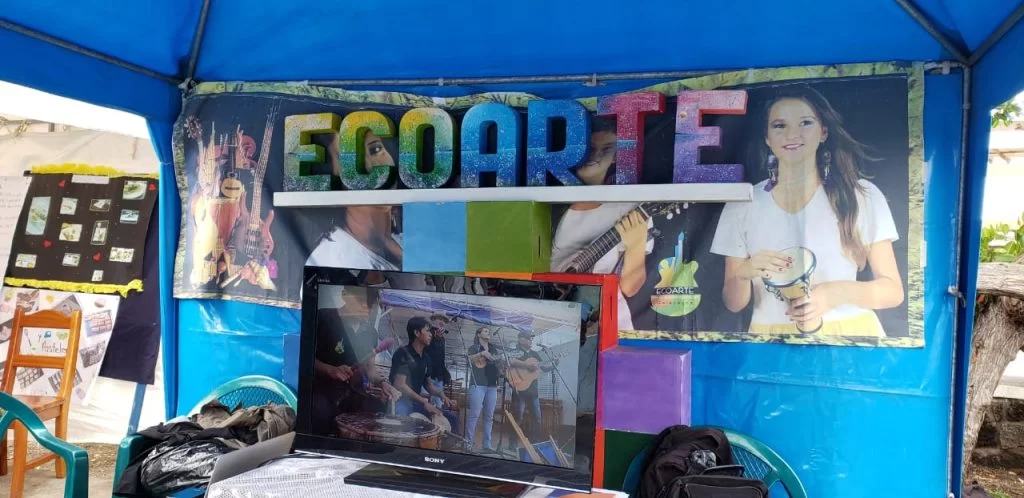
Bertha quiere potenciar la participación ciudadana en la defensa de la biodiversidad del Archipiélago e incentivar el compromiso social para cuidar este Patrimonio © Bertha Corella
One example of such an initiative is the Jadines Botanicos project (Botanical Gardens), which is run by Mirian Silva, a Galapagos native. It helps preserve Santa Cruz Island’s native and endangered plants. Mirian says that her love for plants has been a constant throughout her childhood, and she is determined to preserve the Galapagos Islands native flora.
“I love Galapagos fauna and hope more people will be inspired to have a home with native plants. Plants at home can not only decorate the home but also control the humidity and clean the air. Mirian said that while they do release carbon dioxide at night they also give off oxygen during the day.
Mirian’s project also includes delivering native and endemic plants for Santa Cruz Island schools. Mirian stated, “I want to help preserve the iconic Galapagos flora such as scalesias, miconias, orchids and scalesias. She said that they reforest them in green spaces at local colleges and schools, and so contribute to the preservation of rare plants around the globe.
Galapagos Conservancy is proud support this project for native plant propagation, environmental education and sustainability through the Women in Sustainable Entrepreneurship program (WISE).
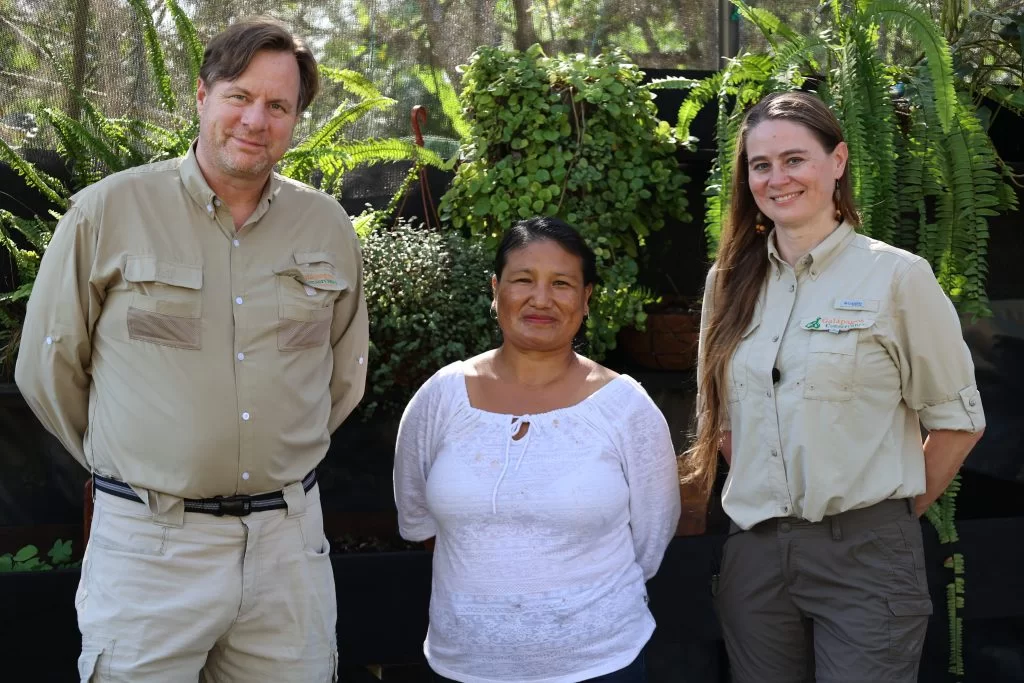
Paul Salaman, President of Galápagos Conservancy; Mirian Silva, founder of the project; and Amy Doherty, Senior Director of Operations © Galápagos Conservancy